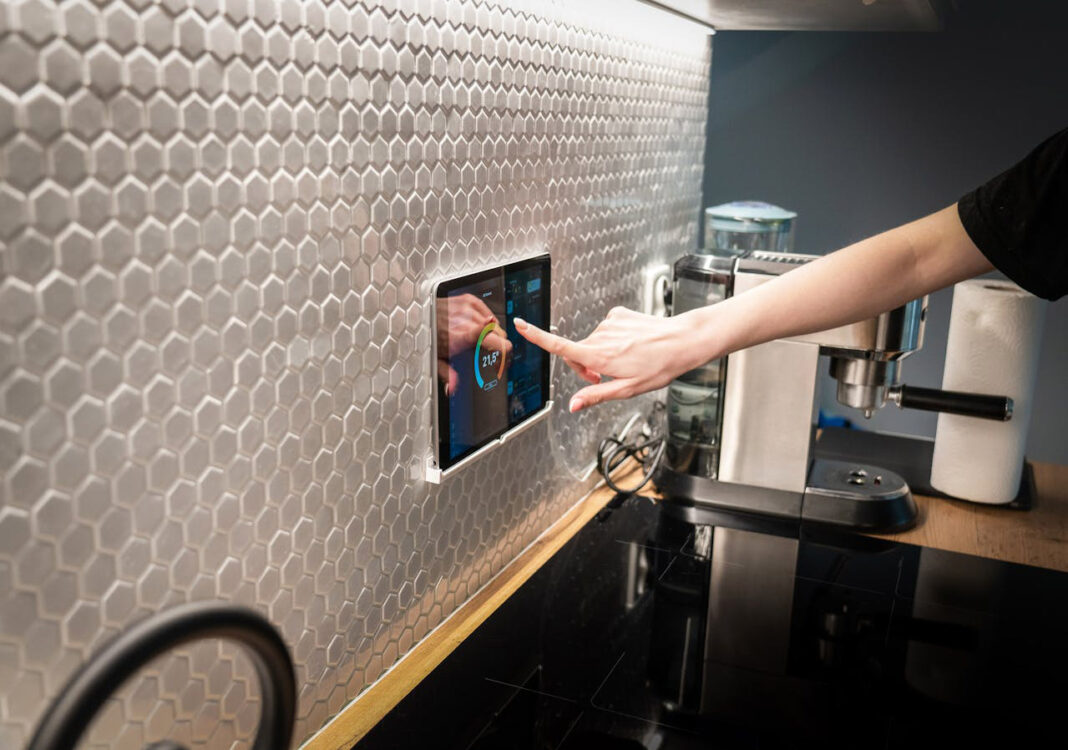Creating a sustainable smart home is more than just a trend; it’s necessary. More homeowners are seeking solutions that not only enhance comfort and convenience but also reduce their environmental impact. Whether building from scratch or upgrading your home, integrating smart technologies with sustainable living practices can significantly reduce energy consumption, lower your carbon footprint, and lead to long-term financial savings.
This guide will go through the key components of designing an eco-friendly smart home, from selecting energy-efficient appliances to leveraging renewable energy systems and optimizing electricity use through smart strategies like Rhythm Energy’s PowerShift plan. These recommendations will help you create a smart and sustainable home that perfectly aligns with upscale living ideals.
The Foundation of a Sustainable Smart Home
When discussing sustainability in smart homes, we mean minimizing the consumption of natural resources, reducing waste, and enhancing energy efficiency by integrating technology. The ultimate goal is to create a home environment that optimizes comfort and functionality while reducing its ecological impact.
To achieve this, focus on three key elements: energy efficiency, renewable energy integration, and sustainable lifestyle practices. Let’s explore these further.
Choose energy-efficient appliances and smart devices
Energy-efficient appliances are the cornerstone of any sustainable home. Modern technology has made it easier to incorporate devices that use significantly less energy while delivering the same, if not better, performance. Appliances with an Energy Star rating, for instance, guarantee high energy efficiency.
Incorporating smart technology takes energy efficiency to the next level. Smart appliances, thermostats, and lighting systems can be programmed to operate only when needed, minimizing waste. For example, smart thermostats like the Nest or Ecobee learn your schedule and automatically adjust the temperature, ensuring your HVAC system runs only when necessary. This technology can result in a considerable reduction in energy use over time.
Additionally, you can program smart lighting systems such as Philips Hue to switch off automatically when no one is in the room or adjust brightness based on the time of day. These solutions allow homeowners to control their energy consumption precisely, promoting sustainability while maintaining luxury and comfort.
Integrate renewable energy systems
Integrating renewable energy systems like wind turbines and solar panels is one of the primary ways to create a sustainable smart home. Solar energy, in particular, has become increasingly accessible and affordable for homeowners. With the integration of solar power, your home can generate clean, renewable energy, drastically reducing reliance on fossil fuels.
Pairing solar panels with a smart energy management system can optimize your energy use even further. Smart energy systems monitor energy production and consumption, storing unused energy in batteries for later. When solar panels produce the most energy during peak sunlight hours, your system can store that energy to power your home during the evening or peak grid demand, further enhancing energy efficiency.
Incorporating energy storage solutions such as Tesla’s Powerwall or other battery systems ensures you can make the most of renewable energy, reducing reliance on the traditional power grid and overall energy costs.
Optimize energy use
One of the most efficient ways to manage energy consumption in a smart home is by leveraging a time-of-use electricity plan, such as Rhythm Energy’s PowerShift plan. This innovative prepaid electricity option allows homeowners to shift their energy usage to off-peak hours, significantly reducing electric bills and minimizing strain on the power grid.
With the PowerShift plan, you can program smart devices—such as dishwashers, washing machines, and electric vehicle chargers—to run during off-peak hours when electricity rates are lower. This strategy reduces energy bills and supports sustainable living by decreasing demand during peak hours, often relying on less environmentally friendly energy sources.
Prepaid electricity provides additional flexibility for homeowners to monitor and control their energy consumption, helping build a sustainable smart home. By adopting this strategy, you’re aligning with eco-friendly practices and optimizing energy efficiency and financial savings.
Install smart water management systems
Water conservation is critical in sustainable home design. With smart water management systems, homeowners can track water usage and identify areas where they can conserve more. For example, smart irrigation systems can adjust schedules depending on soil moisture levels, ensuring that your garden receives just the right amount of water without wasting any.
Indoor smart water sensors can also detect leaks or unusual water usage, allowing you to address potential problems before they become significant. These devices can save water and money, making them a smart addition to any eco-friendly home.
Use sustainable building materials and an eco-friendly design
In addition to smart technology, the materials you use to build or renovate your home play a significant role in sustainability. Choose eco-friendly materials like reclaimed wood, bamboo, or recycled metal that have a lower environmental impact than traditional options. They also add a touch of elegance and character to your home.
Insulation is another critical factor in maintaining energy efficiency. High-quality, sustainable insulation materials, such as sheep’s wool or cellulose, help regulate your home’s temperature, reducing the need for heating and cooling.
Adopt a sustainable lifestyle
Ultimately, a sustainable smart home is about more than just technology; it’s a lifestyle. Adopting sustainable practices—such as reducing waste, recycling, and making conscious decisions about energy and water use—amplifies the impact of your smart home design. For example, composting kitchen waste, installing a rainwater harvesting system, or using eco-friendly cleaning products are small lifestyle adjustments that collectively contribute to a more sustainable home environment.
Sustainable Is the New Black
Crafting a sustainable smart home is an ongoing process that involves combining advanced technology with conscious lifestyle choices. From energy-efficient appliances and renewable energy systems to smart water management and optimizing electricity use through Rhythm Energy’s PowerShift plan, the options for creating a green, smart living space are more accessible than ever. By making informed decisions and integrating these strategies, you can enjoy an intelligent, eco-friendly home that aligns with your values and upscale living standards.






